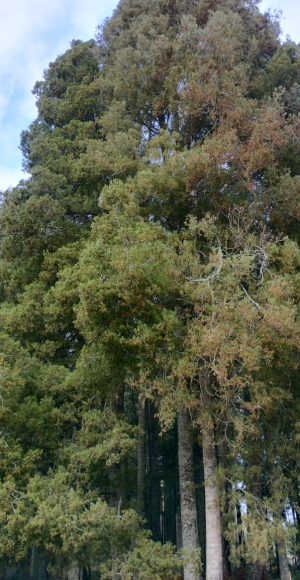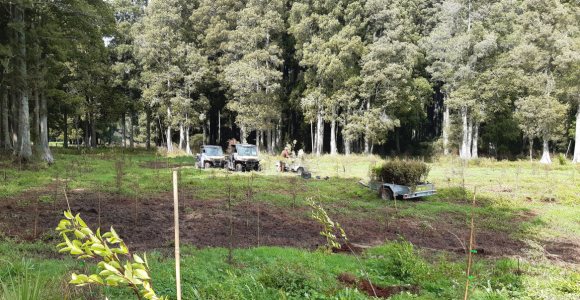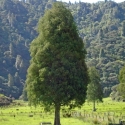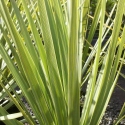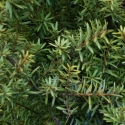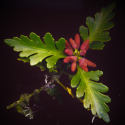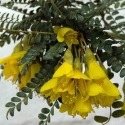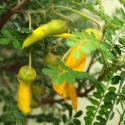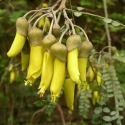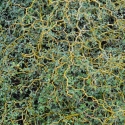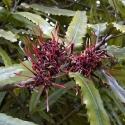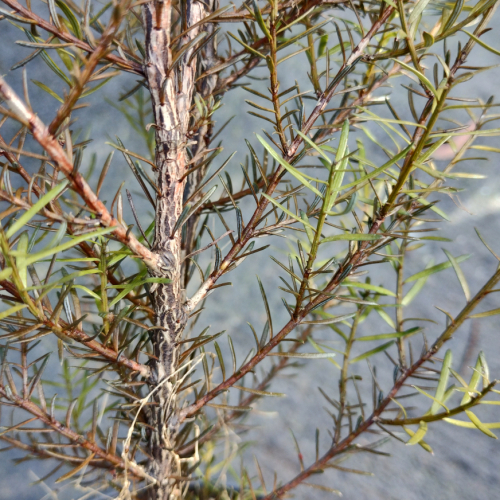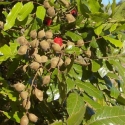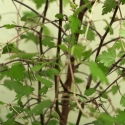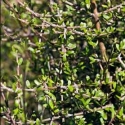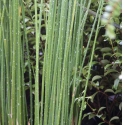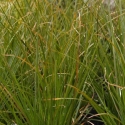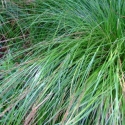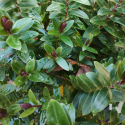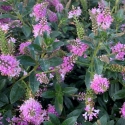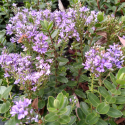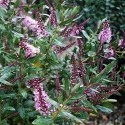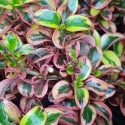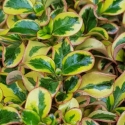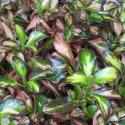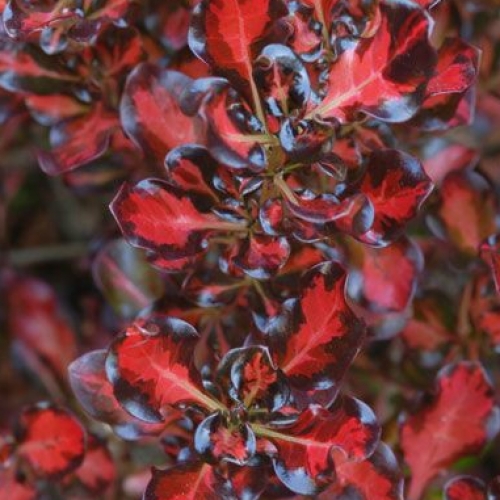Friday 25th April, 2025
Hi
As Anzac day is celebrated across the country many New Zealanders will pause and think about days gone by and the sacrifices made by those in the past so that we can enjoy many of the freedoms we take for granted. Part of those freedoms are the legacy for our children and our children's children to enjoy this beautiful county and the natural environment which many of us treasure.
As gardeners we are often planting for the future or at least the next owner to enjoy, as some trees and shrubs will outlive their original gardeners. That is part of the joy of gardening - the change of seasons, change of life stage of each of our plants as they grown and mature. There's a lot of satisfaction in watching your plants flourish from the seedling stage into a mature specimen. How many people have driven past an old property and noted the changes or how things have grown since they have left (or maybe just the things THEY would have done differently).
The mature kahikateas on the land which tower above the pond and support a wide range of bird and other wildlife.
As a newbie here at the nursery I (Tracy) was excited when Lloyd mentioned he was taking the whole gang down to see the "reserve" and talked about what has been achieved there in the recent past. His story reflects his passion for the environment and love of growing things. When he first purchased this block of land containing the nursery, the bonus was the magnificent stand of kahikatea out behind the pond area. Over the years as he got to know the land which is basically a swamp, he thought about how to restore some of the wetland areas and enhance the natural space which had been inundated by weed species. This was going to be a long term project and one which would take many hours of hard physical labour and back breaking effort. The first step was to remove some of the wall of privet, honeysuckle and other invasive weeds in order to plant a selection of natives which could cope with the wetland conditions. Some of the privet was the size of a small tree and it all had to be cut down and weed pasted by hand before being dragged into piles for burning to allow access for planting.
It was often a case of two steps forward one step back, as limited access one wet winter meant the privet was not knocked back and reestablished to a height of 2m by the time they could get into the block. Slashing a path to get the big 200 l tank of spray in amongst it was the only way to get back on top of these weeds. Willow weed was another which thrived in the wet and required multiple efforts to wrestle under control. Its a case of trial and error with this work as you have to consider the effect on the existing trees as well as how to tackle the problem in front of you.
Wairere team planting young seedlings where it once was covered in weeds
Once the area was cleared of weeds, planting could get underway by manually digging, planting and staking hundreds of natives. A funding boost from a local council was welcome and helped purchase some of the kahikatea, pukatea, matipo, harakeke and mingimingi which have been used. All these are natural Waikato wetland natives and ideally suited for the environment. Now the land is relatively weed free, the big trees have started the process of natural renewal -kahikatea seedlings are starting to pop up as well as the planted specimens. Autumn is the perfect time for this planting work with soil moisture starting to kick in and mild temperatures to activate growth. This week saw the planting of 500 kahikatea and other natives by Lloyd and the crew. He was happy to show all the nursery staff around to enjoy the peace and tranquility and marvel at what has been achieved so far. Its a special privilege to work here, next to these giants and to imagine how it will look in 50 to 100 years when future generations will reap the benefits of this work. A legacy in the making.
Here at the nursery we have seen an increase in people starting to think about their own planting projects. Natives are always a popular and versatile choice
Native Trees
Choosing the right plant for your situation is helpful to get the best result - horses for courses so to speak. Some trees thrive in wet conditions and others prefer well drained sites on slopes or sandy soil.
Kahikatea as mentioned above, are trees which thrive in moist conditions, being used to grow in swamps like what originally covered the Hauraki Plains and much of the Waikato. These have a juvenile form which has brown leaves and weeping habit compared to the mature form which has a more green flattened leaf. These are perfect for gully floors along with Cabbage Trees, Mahoe and pukatea and rewarewa. Plant your
Cabbage tree at the bottom of your gully and save picking up all the fallen leaves!
Totara are perfect for gully slopes or tops where the drainage is good and they can help stabilise the bank.
Celery Pine or Phyllocladus is an unusual upright tree which has flattened stems called cladodes which look like leaves. This one is perfect for well drained areas and reaches a mature height of around 20 metres.
For smaller growing trees which grow in most situations you can't go past kowhai. These come in a range of sizes and leaf shapes.
Typically the biggest growing kowhai is
Sophora tetraptera. This species flowers at a younger age than others and grows to around 4 or 5 metres.
Sophora microphylla is the small leaf form of these small to medium sized trees. This one has dainty small fern like foliage. Easy to grow in a sunny position. It is semi - evergreen in cold climates.
Dragons Gold is one of the compact forms which is great for town gardens. It only gets to around 2.5m high and attracts native birds with the gorgeous late winter flowers.
Sophora prostrata is a typical New Zealand divaricating plant. The tangled, twisted branches form a low mound with tiny olive green leaves.
Other trees mentioned above which love the wet include matai and rewarewa.
Rewarewa or Knightia excelsa are an upright tree which attracts birds with their nectar filled flowers.
Matai are a magnificent forest tree with dark bark and narrow dark green feathery foliage. The female tree has bright red berries that appear after flowering and are a favourite food of the keruru.
Titoki are a versatile tree which thrives in a frost free situation and form a round headed medium sized tree. It has large, glossy, light green dissected foliage and sprays of rusty red woolly flowers appear in summer followed by scarlet berries with jet black seeds.
Ribbonwood are a native tree worth considering for any planting scheme. When young the interlacing branches are covered in small dainty leaves. The leaves and the whole tree become more graceful as it matures. Easy to grow and wind tolerant - this one is deciduous.
Native Shrubs and grasses
Cultivated Natives
Although the purists wouldn't call them natives, Hebe and Coprosma cultivars have been developed from our native plants and cultivated to give more consistent garden performance. The Hebes come in a massive range of colours sizes and foliage including some which will be perfect for pots or planters. Some gardeners will be familiar with the Royal series of hebes which celebrate the British Royal family. These include
Catherine and William,
Elizabeth, George,
Charlotte and were bred in the Waikato and suit our conditions.
Coprosmas also are a family which has been cultivated to improve on their garden value. Shiny bright leaves colour which intensifies in winter make them a stand out for any garden. The names say it all...
Inferno,
Ignite,
Pacific Sunset,
Evening Glow and
Golden Star - its all about the colour in the leaves and the names evoke the spectacular sunset colours of reds, orange, yellow, purple and scarlet.
Watching the sunset is a nice way to reflect on what you have experienced, achieved or are looking forward to from the day. I like this quote from Thomas Monson: "The past is behind, learn from it. The future is ahead prepare for it. The present is here, live for it."
Whatever you are doing this long weekend I hope it's a good one living life to the full with friends and family.
Cheers from Lloyd, Tony and the team at Wairere
